#but it's not a law of nature!!
Text
there's a big difference between standpoint epistemology, the observation that marginalized people are better positioned to understand certain social processes, and "the only way to understand anything is through first hand experience"
#standpoint epistemology is an important insight#but it's not a law of nature!!#your experience is valuable for developing understanding but it's always inevitably limited to yourself
0 notes
Text
fundamental to bioessentialist and zionist ideology is a refusal to recognize that victimhood is situational rather than ontological
#honestly the terf-zionist overlap ime is massive. and yet the parallels in experience btwn diaspora jews and trans women is undeniable#but like. generally an incapability to recognize that jews are not inherently victims in an existential sense#but that antisemitic persecution is like... circumstantial. not natural law.
5K notes
·
View notes
Text
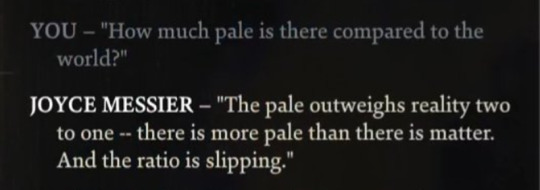




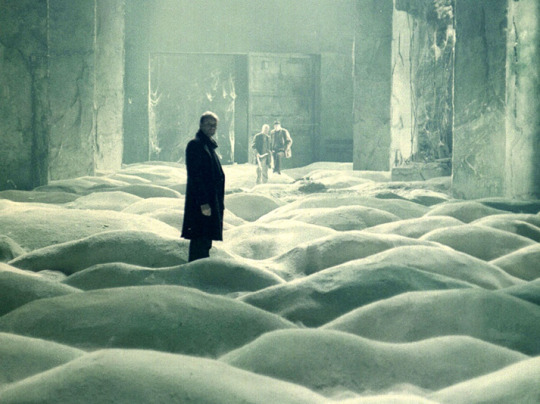
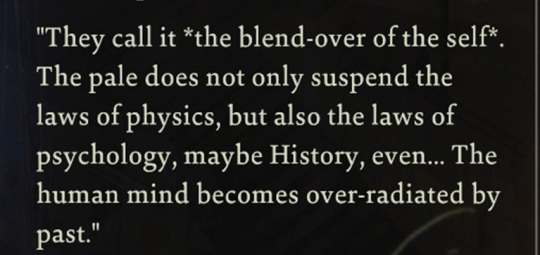
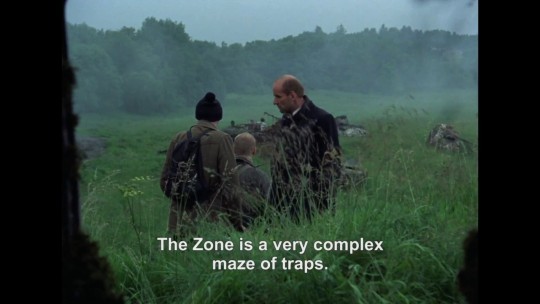


[Disco Elysium II Darker Than Black (2007) II Disco Elysium II Annihilation - Jeff Vandermeer II Stalker (1979) II Disco Elysium II Stalker (1979) II S.T.A.L.K.E.R.: Shadow of Chernobyl II Disco Elysium]
#web weaving#web weave#disco elysium#darker than black#annihilation#stalker#s.t.a.l.k.e.r.#shadow of chernobyl#sci-fi#the concept of a place where natural laws no longer apply
2K notes
·
View notes
Text
i really like the hc that magic loved arthur and protected him until merlin came into the picture but very specifically bc it means his idea of like. the laws of physics and How Nature Works would be completely warped. the reason why all those miraculously falling branches didnt raise any questions? its been happening to him his entire life
#like sorry. the headcanon that magic loved arthur is so very dear to me. its So So dear to me#that it looked out for him? literally made him and was fond of him bc of that?#like thats crazy. i Love It. anyway#i also like the idea of people being like ‘WHAT THE FUCK’ and hes just like. um? thats normal?#no sense of natural laws of physics at all just whatever magic needed to do to keep him safe was his normal#bbc merlin#arthur pendragon
970 notes
·
View notes
Text
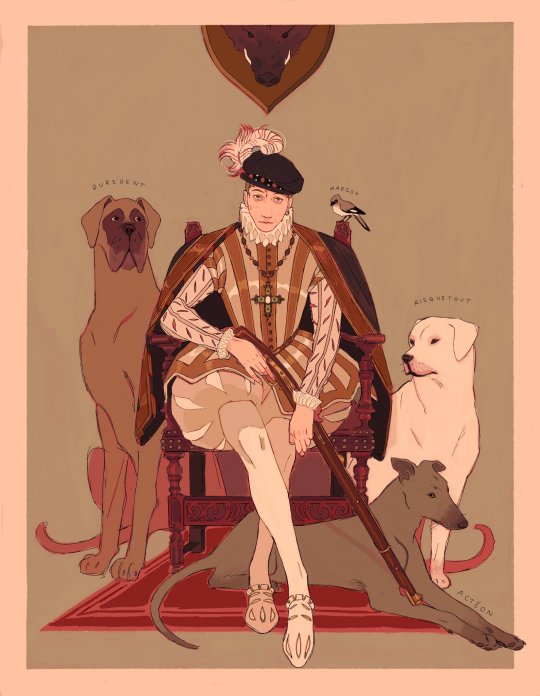
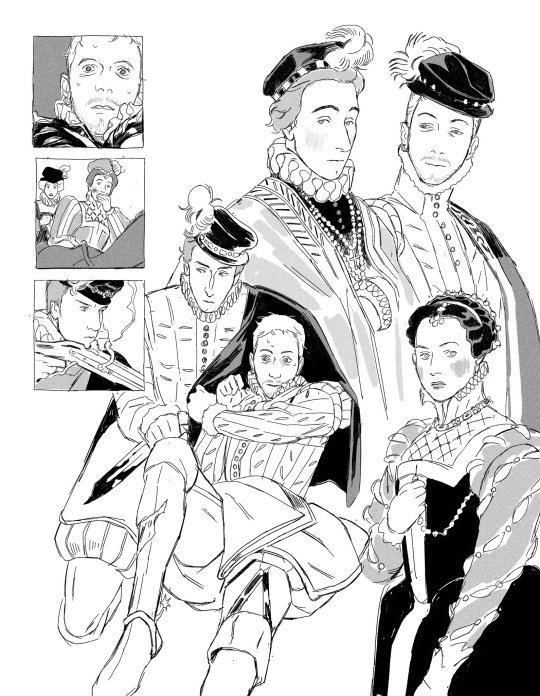
La Reine Margot - Charles IX, Henri de Navarre, and Marguerite de Valois
I.III - Un roi poète
I.XXXI - La Chasse à Courre
II.IV - La Nuit des Rois
#La Reine Margot#Alexandre Dumas#Charles IX#Henri de Navarre#Henri IV#Marguerite de Navarre#new obsession just dropped welcome to the era#Charles is callous and sickly and pathetic so naturally he's a blorbo#he can excuse religious war crimes but he draws the line at his sexy cool protestant brother in law ♥️#i havent even designed the main gays of this book...it has so much to offer#16th century
4K notes
·
View notes
Text
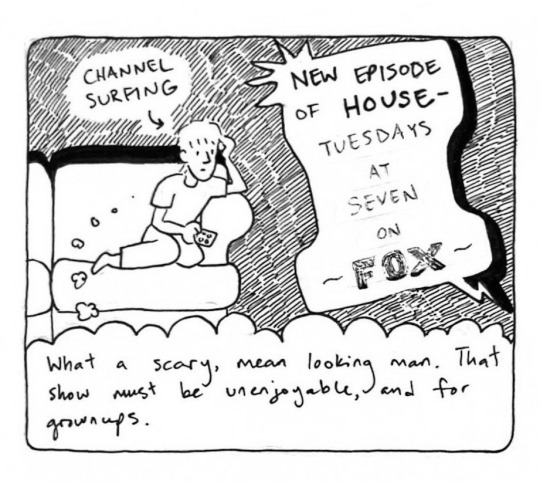


House MD: how it was vs how it’s going
(My own version of this comic)
#a good old fashioned early 2000s gay bait is one of the most powerful things#just a law of nature#house md#house#hilson#episode s6e10 is the one both the original artist and I picked for the comic I just chose a more random line lol#really glad people are liking this one#y’all get it
510 notes
·
View notes
Text
I vaguely remembered that I’d woken up last night at 2am and scrambled desperately for my phone to Wikipedia-search something I just HAD to know, then immediately fell back to sleep.
But for the life of me, I could not remember what I had searched. Curious, I opened my phone’s browser to see this:

You know that feeling: it’s 2am and you really really need to immediately read the biography of Maximilien Robespierre. We’ve all been there.
#i do finally remember why but it’s boring: I wanted to know where he went to law school for some reason#it was at the Sorbonne ofc#i woke up an hour later from a dream about the French Revolution of 1848 so I should have guessed the nature of the Wikipedia search#very funny#stress dream unlocked: various french revolutions#shut up e#frev
501 notes
·
View notes
Text

Wardrobe I styled & handmade for my bestie back in ‘21
#tb#stylist#still my fav piece I created#00l6#mine#art#photography#nature#beach#alex consani#artists on tumblr#zendaya#law roach#fashion#archive fashion#Florida#Miami
531 notes
·
View notes
Text
Herbs to help you regulate cortisol and stress 🌿🍵🧚
🍃 Chamomile when you have an anxious stomach
🍃 Valerian when your thoughts don’t let you sleep
🍃 Skullcap when you feel muscle tension from stress
🍃 Holy basil when you’ve been high stress for days
🍃 Rhodiola when you feel burnt out from stress
🍃 Gotu kola when stress is causing you brain fog
🍃 Passion flower when you feel irritable and snappy
#herbs#plants and herbs#natural medicine#meditation#womens health#healthy lifestyle#health tips#health and wellness#healthylifestyle#cortisol#manage stress#hormones#hormonal balance#hormonal imbalance#healingjourney#healing#law of the universe#medicinal herbs#chinese herbs#natural herbs#herbsforhealth
337 notes
·
View notes
Text
—
“the U.S. Supreme Court rejected the State of Alaska’s bid to fast-track the legal process, overrule the Environmental Protection Agency (EPA), and gain approval for the Pebble Mine — slated to extract enormous amounts of copper, gold, and molybdenum from the pristine and sensitive ecosystem known as Bristol Bay.
A diverse coalition led by Alaska Natives has consistently fought against the proposed mine for more than two decades. It eventually gained support from the EPA, which ultimately blocked the mine proposal in January 2023 over concerns it would threaten an aquatic ecosystem supporting the world’s most prolific sockeye salmon fishery.
This decision is significant, particularly considering the current High Court’s tendency to support states’ rights, limits on regulation — especially of the environmental variety — and corporate concerns. Alaska’s request, filed in June, was unusual in that it sought to skip lower appeals courts to challenge the EPA’s decision on the basis that it violated Alaska’s state sovereignty.
Under the law, alleged violations of state sovereignty are one of the few categories of cases that grant the Supreme Court original jurisdiction — meaning a state can bypass the usual state/federal court appeals process and file straight with the High Court. The justices could easily have decided to hear the case and decide in favor of the mining company, which has shown no qualms about engaging in some shady business practices over the years.
As the single most productive sockeye salmon fishery in the world, Bristol Bay contains biodiversity and abundant wild fish populations which present a stark contrast to many other fisheries in the Pacific Northwest (and worldwide). Most have experienced severe depletion over the last few decades. Sockeye salmon — like all Pacific Salmon — are a keystone species, vital to the health of an entire ecosystem. Of course, salmon also provide a sacred food source for Indigenous communities up and down the West Coast.”
-from the Lakota People’s Law Project
#good news#environmentalism#nature#environment#environmental law#environmental justice#indigenous activism#conservation#fish#salmon#usa#alaska#alaska natives
378 notes
·
View notes
Text

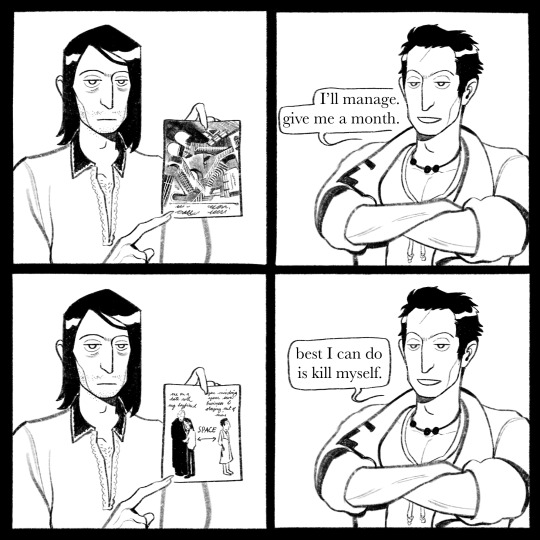
la belle-famille
#do you rember when i would do tons of little comics of andrey coping and seething about his brother's new friend. i rember.#peterstakh#it is. in nature. if you zoom in.#my art#peter stamatin#andrey stamatin#stanislav rubin. if you squint.#i love using “belle-famille” for them because if has a double meaning of#“belle-famille” [with the -] means “in-laws; family-in-law”#and “belle famille” (no -) means “beautiful family; which is used here as tongue-in-cheek because they're all nutcases
840 notes
·
View notes
Text
The Missing Link in Scott's Characterization
(Wrote this in a random document and I think it's good so I'm loosely transcribing it here)
These are some of my thoughts on a crucial facet of Scott's character in the Life Series that I think is overlooked by the fandom.
From my personal viewpoint, people put a lot of emphasis on Scott's caring about his allies over everything else. I think this is an important characteristic. However, I think this being shown as the most central trait is a detriment to how people read his involvement with the overarching narrative. It might be less of a problem if he wasn't directly involved with the final fight of nearly every Life Series.
Because of this combination of things, his main interaction with fans' reading of the final fight is being willing to do anything to make sure his friends win. It gives people the tendency to attribute some victories partially to him, which upsets people who want main read of the story to focus entirely on the winner. But this also has meant that one of Scott's main traits is overlooked.
Just as much, and often, more than Scott values his allies, he values fairness. To showcase this, let's look at Limited and Last Life, where he had the most control on how the final fight took place.
In Last Life, when it's down to the final four, Scott *could* have teamed up with Pearl, his ally all season, to kill Martyn and Ren. That aligns with wanting either your or your allies to win, no? But he doesn't. He suggests they split to the 4 corners of the map and have a fair fight on equal footing. Very fair.
With Limited Life it's even more apparent. Scott and Martyn have an impressive amount of time. They could both still die multiple times. Impulse is running out, and there's a numbers advantage. They could have killed Impulse and Scott could have let Martyn win, or Scott could have given Martyn his time to fight Impulse alone. But instead, he suggests they all go down to the same amount and have a fair fight.
In both situations, Scott puts fairness *over* an alliance victory. Even though Limited Life didn't end up ending fairly, that had nothing to do with Scott.
Double Life certainly has the strongest claim on Scott "letting someone win". That his death is an apology for abandoning Pearl.
But if you listen to what Scott says in the finale, he never apologizes. He says he didn't think they'd get this far, he says she deserves this more than him, and then he says the iconic "Tilly death do us part."
Scott didn't fight Pearl. But I don't think it came out of remorse. I think that too, came from a sense of fairness. Which is that Pearl, by all accounts, DOES deserve this win. If they fought it would basically be up to a draw. To chance. Scott has every chance of winning. But if you go over the events of Scott's final episode, he mostly runs. He survives. While Pearl 1v2'd two separate pairs and won! The only reason Pearl hasn't killed Scott already, who has been her enemy all season, is because they were randomly assigned to be soul-linked. A concept Scott has fought since the very beginning. He knows that while he never hurt their chances, Pearl is the reason they are here, and Pearl is the reason he is here. It wouldn't be fair for Pearl to lose to what is basically a coin flip. So, he doesn't leave it up to random chance.
So yes, Scott is loyal and does care about his allies, he proves that again and again. But the way he is involved in how the series end shows that his sense of order and fairness are equally important. Also, I think viewing his contributions from this angle help remedy some of the reasons people don't like his usual characterization because of how it effects the agency of other characters.
#I've tricked you all into reading an essay that's secretly about why Life Series Scott is lawful neutral#Muahaha#Also I think you can still say he contradicts the nature of the Life Series with this#But instead of “he is nice and doesn't betray his friends”#it's “he embodies order and fairness in a series of chaos and strife”#last life#llsmp#last life scott#double life#dlsmp#double life scott#limited life#24lsmp#limited life scott#life series#traffic smp#trafficblr#smajor1995#scott smajor#lollipopplestalks
308 notes
·
View notes
Text


Walks at sunset to compensate academic failure
#studyblr#lawblr#studyspo#law student#studyspiration#studying#study#coffee#nature#landscape#spring#flowers#sunset#spring landscape
912 notes
·
View notes
Text
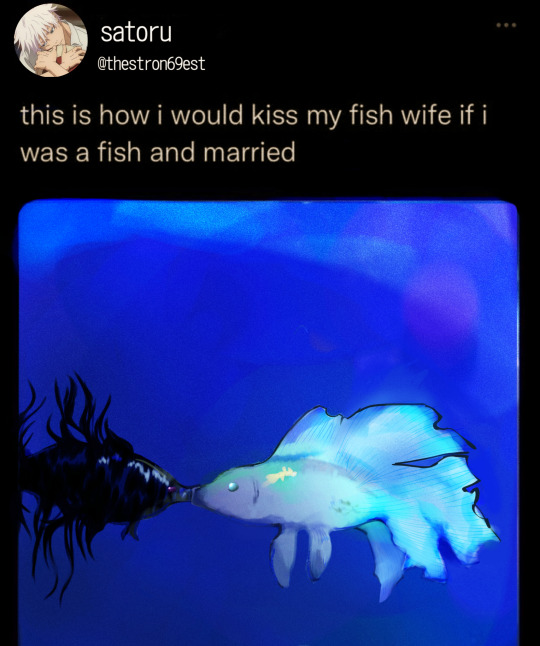
my take on the depression <3

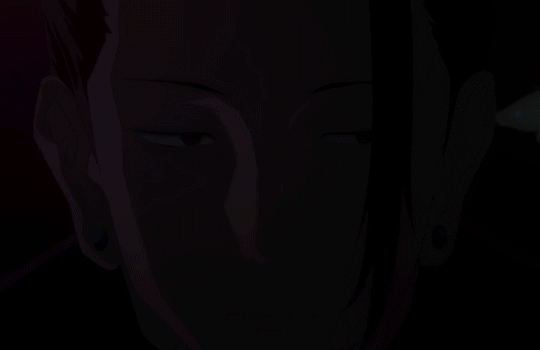
#五夏#satosugu#stsg#gojo satoru#geto suguru#jujutsu kaisen#beta fish#not even the laws of nature would stop gojo satoru's homosexuality#amen
910 notes
·
View notes
Text

"..this is what you wanted to show me?"
"Superior to your filthy earthan oceans, isn't it?"
"..shut up zim."
#zadr#zadf#iz zadr#invader zim#iz#zim#invader zim dib#dib membrane#irk#irken empire#irken architecture#i feel like irk doesnt have very many natural beaches left#but there are a few rare ones#and because of the irken allergies they are the clearest water you'll ever fucking see#no pollutants#no micro plastics#Irken laws make SURE their water is clear#they dump all their trash on waste planets anyway#irkens are such a prideful species you think they wouldnt make sure their planet is in absolute PERFECT condition?#all the more reason why what zim did during impending doom one was such a horrible offense#anyways i spent seventeen hours on this over the course of several days and my hands hate me#please enjoy it <3#p l e a s e.#my art
273 notes
·
View notes
Note
Hello, in fic I've come across mentions of
- the elves stopping frequently on their journey to Aman to have sex (and Orome urging them forward by creating storms?)
- elf sex being too intense for most mortals to survive
I think these come from HoME or NoME (or similar sources), but I've never seen the actual quotes. There might be other things related to elf-sex in there as well.
So I guess my question is: What else did Tolkien mention about elf sex, apart from (the already relatively well-known) LaCE?
Elf Sex Lore
There comes a time in every Tolkien fan’s journey when they come upon the Professor’s writings on Elf sex — and, since 2021, there are even more! Elf Sex Lore remains a hot topic as the fandom continues to experience the aftershocks of the spurt of new lore that came with the publication of The Nature of Middle-earth (NoMe) in 2021.
As you say Anon, before NoMe was published, the fandom’s primary resource on Elf sex was the (in)famous essay Laws and Customs Among the Eldar (LaCE), published in 1993 in Morgoth’s Ring, the tenth volume of the History of Middle-earth series. LaCE is full of juicy (or not-so-juicy) lore about Elven aging, marriage, gender roles, naming, death, and rebirth.
It is in relation to the first two that we get some details on Elf sex, such as the knowledge that “it was the act of bodily union that achieved marriage, and after which the indissoluble bond was complete.” (Laws B). We also learn that:
“…the Eldar say* that in the begetting, and still more in the bearing of children, greater share and strength of their being, in mind and in body, goes forth than in the making of mortal children. For these reasons it came to pass that the Eldar brought forth few children; and also that their generation was in their youth or earlier life, unless strange and hard fates befell them. But at whatever age they married, their children were born within a short space of years after their wedding. For with regard to generation the power and the will are not among the Eldar distinguishable. Doubtless they would retain for many ages the power of generation, if the will and desire were not satisfied; but with the exercise of the power the desire soon ceases, and the mind turns to other things. The union of love is indeed to them great delight and joy, and the ‘days of children’, as they call them, remain in their memory as the most merry in life; but they have many other powers of body and of mind which their nature urges them to fulfil.”
The History of Middle-earth Vol. 10: Morgoth’s Ring, ‘The Later Quenta Silmarillion (II)’, Laws B
*Note how this paragraph is introduced: “the Eldar say”. Phrases like this signal to us that LaCE is not written from a Elvish point of view. There are indications elsewhere clearly pointing to a human author with a human audience in mind.
Translation: Elves use up a lot of energy in baby-making, including in the sex part (“begetting”) but even more in the pregnancy and birthing part (“bearing”), so they don’t have a lot of children and they do so early in life, shortly after marriage. But even if they marry later in life, Elves are still able to have babies because being able to and wanting to reproduce are the same thing for Elves. But once they’ve fulfilled the desire to make babies they’re good and turn to other things. Still, they look back on the time of baby-making as “the most merry in life”.
In most (if not all) cases, when Tolkien writes about sex he is writing about reproduction. Did Elves have sex solely for pleasure? Maybe; I cannot find anything that says they didn’t. I also can find little conceptual separation of sex and reproduction in Tolkien’s writings. Make of that what you will.
(At this point I want to reiterate a principle central to this blog: it’s about presenting what canon says; it is not about casting judgement on creations that subvert, reinterpret, or ignore canon, none of which makes a work lesser than one which adheres strictly to canon.)
So what did NoMe add to our knowledge about Elf sex? First of all, let’s make sure we all know what NoMe is.
What is The Nature of Middle-earth?
NoMe is a volume of texts by J.R.R. Tolkien collected and edited by Carl Hostetter. It is basically a supplement to the last three volumes of The History of Middle-earth (Morgoth’s Ring, The War of the Jewels, and The Peoples of Middle-earth), which cover a period from the late 1950s to his death during which Tolkien was undertaking a rather massive project of worldbuilding, working out the structures underlying his Silmarillion mythology in preparation for revising and publishing what he had written of it before ‘a sequel to The Hobbit’ (LotR) took him away from it for the better part of two decades.
Christopher Tolkien in Morgoth’s Ring called this undertaking “analytic speculation concerning [the] underlying postulates” of his world (Foreword to Morgoth’s Ring). That’s how we end up with essays like LaCE and the philosophical debate about the fates of Men and Elves in Athrabeth Finrod ah Andreth.
The texts in NoMe all date to around the same time and deal with the same sorts of questions about the physics and metaphysics of the world: it contains the essay on ósanwë, for example.
The Context of the NoMe Sex Lore
The first section of NoMe, ‘Time and Ageing’, is where we get the new lore on Elf sex. As it happens, the sex lore is rather incidental to extensive ruminations two core questions:
How did Elves experience the passage of time and how did they age?
How did the population of Elves go from 144 at Awaking to a sufficiently high number (around 30 000) when they reached the shores of Beleriand on the Great Journey?
(It is not relevant to get into why 144 and why 30 000 here; suffice to say those are the numbers Tolkien wanted and he expended great imaginative and mathematical energy trying to make them work.)
A note on the textual context: Anyone who has ever engaged in worldbuilding knows how it can go. You think (for example), “Okay, I need to develop a backstory for this character’s spouse,” and before you know it you are knee-deep in invented genealogies and geographies and Eru-knows-what-else.
It’s important to bear in mind that this is what Tolkien was doing. The quotes we are about to look at (yes, very soon!) are from a collection of evolving (and unresolved) notes in various states of refinement from barely legible scribbles to carefully penned essays. I will let you decide what that means to you based on your personal definition of canon, but I wanted the textual context to be clear.
Elf Sex Is Intense
In relation to Question 1, Tolkien considers the time-scales of Elven growth, including pregnancy. In the essay under discussion, Tolkien decides that Elven pregnancy should, like human pregnancy, take about 3/4 of a year. Oh no - not that kind of year. A yên, a ‘long year’, the unit used by the Elves and to which the matter of their bodies (their hröar) is bound. Elves gestate for 108 Sun years.
I know what you’re asking: If the pregnancy lasts 108 years, then how long does the sex last?
No? No! You’re probably asking yourself why Tolkien hated Elf-women so much (don’t worry, he says there’s no pain…)! But Tolkien was interested in the first question, which he answered thus:
“On the other hand the act of procreation, being of a will and desire shared and indeed controlled by the fëa, was achieved at the speed of other conscious and wilful acts of delight or of making. It was one of the acts of chief delight, in process and in memory, in an Elvish life, but its intensity alone provided its importance, not its time or length: it could not have been endured for a great length of time, without disastrous “expense.”” (NoMe, p. 24)
An earlier version of this passage, which you may also come across in fandom, comes to a similar conclusion:
“But the act of procreation not being one of growth until the union of the seed and being under full control of the will does not take long - though it is longer and of more intense delight in Elves than in Men: too intense to be long endured.” (NoMe, pg. 27)
Translation: Pregnancy, like other aspects of physical growth, is a process of the hröa over which the fëa has no control; thus it is bound to unfold on “Elvish time”, i.e. 1 year = 144 years. But the sex leading up to it is an act of the fëa and under its control and therefore occurs at a “normal” speed. The Elves love it, too! But not because of how long it lasts, which is a regular amount of time, but because of how intense it is. In fact, it is so intense that if it were any longer they would suffer “disastrous “expense”.”
What is this “expense”? Basically, it’s referring to the usage of an Elf’s natural “vitality” — far greater than that of Men but not infinite. As far as I can tell, this passage means that having intense Elf sex for too long would have spiritual results similar to Míriel’s bearing of Fëanor, or Fëanor’s creation of the Silmarils. Too much of their spirit would be expended (used up) in the act, with possibly disastrous consequences.
These are the quotes from which, I think, originate the rumour that Elf sex was too intense for mortals to survive. As you can see, the discussion is about Elf/Elf relations. Elf sex is too intense for Elves to endure for too long. Anything about what this means for Elf/Mortal sexual relations is fan conjecture.
That’s the Elf Sex nugget from Tolkien’s considerations of Elven growth rates: Elf sex (between Elves) is intense but of a normal duration.
Elven enthusiasm for baby-making delays March
As you can imagine, more nuggets are unearthed in relation to Question 2, which boils down to Tolkien crying: “I need the Cuiviénen Elves to breed a lot and quickly!”
Initially, Tolkien developed some Elven life cycle schemes that had them taking a leisurely approach to reproduction, with each generation taking many hundreds, even thousands, of Sun years to materialise.
This scheme did not work for getting him from 144 to ~30k in the timeframe he wanted. So, he made some adjustments to the scheme with respect to the timing of Elven maturity and consequent desire to begin reproducing — and then set about getting those Elves procreating!
One of the solutions he entertained was giving the Elves opportunities to reproduce on the Great Journey. He laid all of this out in a timeline (NoME, p. 49-53) detailing where and for how long the host of Elves would pause because of the “desire to beget children” (p. 49).
Reading this timeline, it can become increasingly comical each time this desire to reproduce (i.e., have sex) halts the host. It can start to read like, “The Elves took forever to cross Middle-earth because they couldn’t stop banging!” And, in a way, that is what happened. But bear in mind the context is an attempt at solving the problem of increasing the Elven population to a number Tolkien considered satisfactory for his worldbuilding endeavours. An Elven enthusiasm for sex is there, but it’s not the whole picture.
There are several points on the timeline when Oromë hangs out with the Elves or checks in on them, and he does become increasingly concerned with their begetting-related delays. For example:
“About 2000 pairs (of available Telerin 8th gen. of 4,950) beget children in the spring 1130/80. The Chiefs and Oromë are disturbed.” (NoMe, p. 51)
(“The Chiefs” are Ingwë, Finwë, and Elwë.)
And:
“Either by chance, machinations of Sauron, and/or because Oromë withdraws protection (hoping to make the Eldar less content with their new Home (Atyamar), winters are hard and the weather worsens.” (NoMe, p. 51)
The second quote is the origin of that rumour about Oromë creating storms to urge the Elves on because they were having too much sex. Is it canon? Not quite: Oromë didn’t create the storm, for one, and the emphasis is on sex for the pleasure of children more than the pleasure of sex on its own (though, as we know from the previous discussion, sexual pleasure was certainly had!). But the rumour you've heard is not without basis in Tolkien’s notes.
The First Elves Really Loved Sex
There’s one more Elf sex nugget in NoMe that I’d like to end with. While scrambling to get his Cuiviénen Elves reproducing at an adequate rate to reach his population-at-finding target, Tolkien came up with what he calls the “Quick prolific” scheme (p. 99).
“The Quendi in their first few generations before the March (or reaching Valinor) must — as is quite reasonable — be made far more eager for love and the begetting and bearing of children. *They must have larger families, at shorter intervals between births.” (p. 107)
To explain this attitude of reproductive eagerness in the first few generations of Elves, Tolkien coins the term “philoprogenitive” — they love to procreate! Procreating — not artistic and intellectual pursuits or exploration or leadership as with later generations — is their number one priority in life. So much so that “they mated almost at once with their predestined mates” (p. 54).
Not only that, but they have so many babies! In one version of the scheme, 12 children per couple in the first generation (p. 108). (This soon changes to 6 per couple. Philoprogenitive they may be, but no one gets to outdo Fëanor).
As with the highly intense Elf sex and the Great Journey delayed by procreating, this is another bit of NoMe lore with great imaginative potential. As we learn from LaCE, Elves enjoyed sex, quite a bit actually, but they enjoyed a lot of other things also, and after a period of baby-making they would usually move on from sex (though they would always remember it fondly). But the First Elves, those early generations by the shores of Cuiviénen? No such balance between sex and other pursuits. It was all about sex and procreation for them.
Of course, what we’ve been looking at are drafts and notes. While all written around the same time (late 1950s to early 1960s), none of the texts here examined were ever finalised and many of them don’t even agree with each other. Tolkien was experimenting; he was worldbuilding. And with the publication of these notes in NoMe, we in turn get some intriguing ingredients for worldbuilding of our own.
So, do as you like with the Elf sex lore. But if you’re looking for a great setting for some canon-compliant smut, may I suggest Cuiviénen?
Resources
PDF of LaCE
Mythgard Academy’s seminars on The Nature of Middle-earth. You don’t actually have to have read or own NoMe to follow these discussions. Great for getting a handle on the material, and ideal for listening as you work your way through reading.
#nature of middle-earth#history of middle-earth#laws and customs among the eldar#anon#happy valentine's day
191 notes
·
View notes